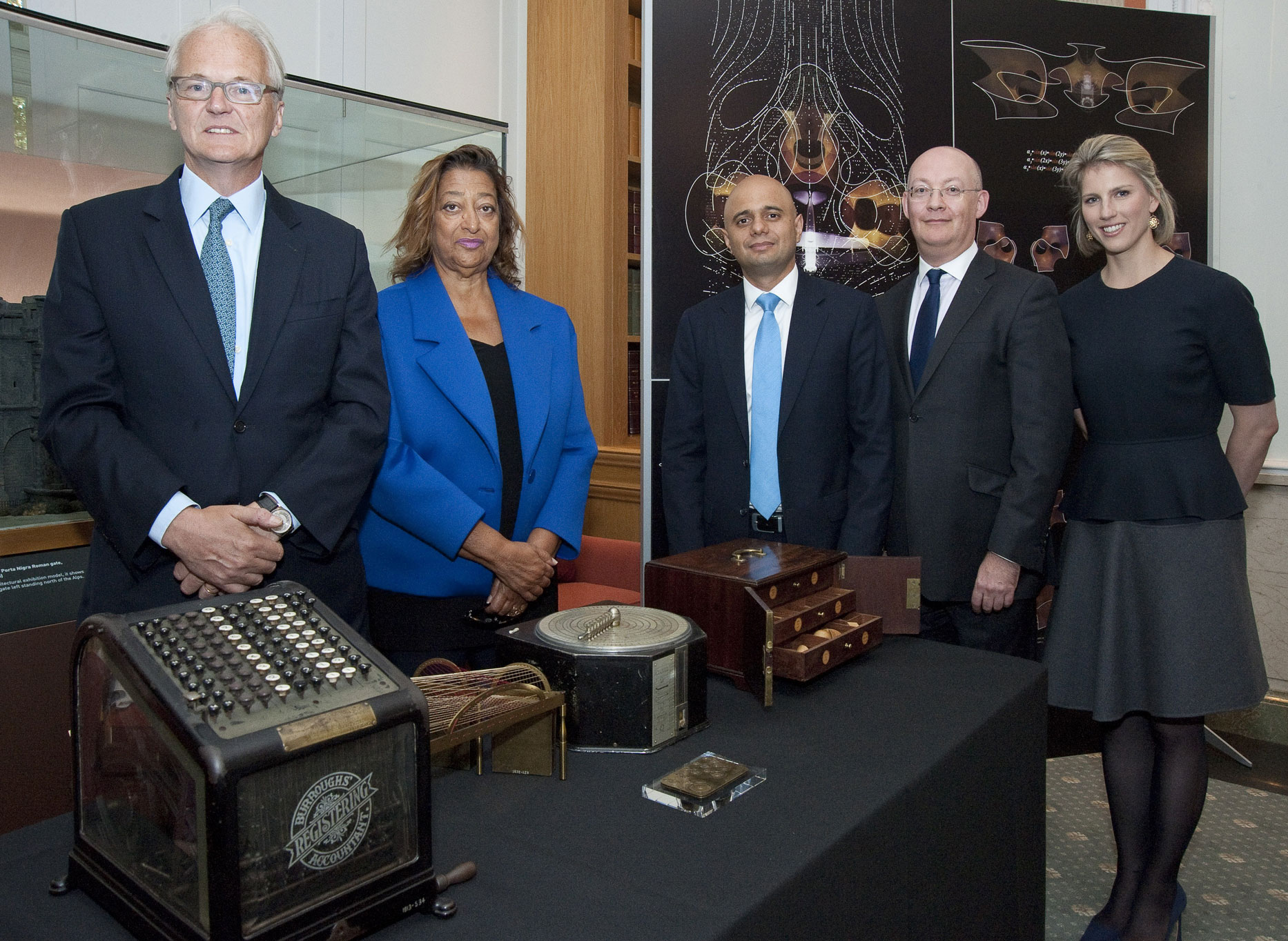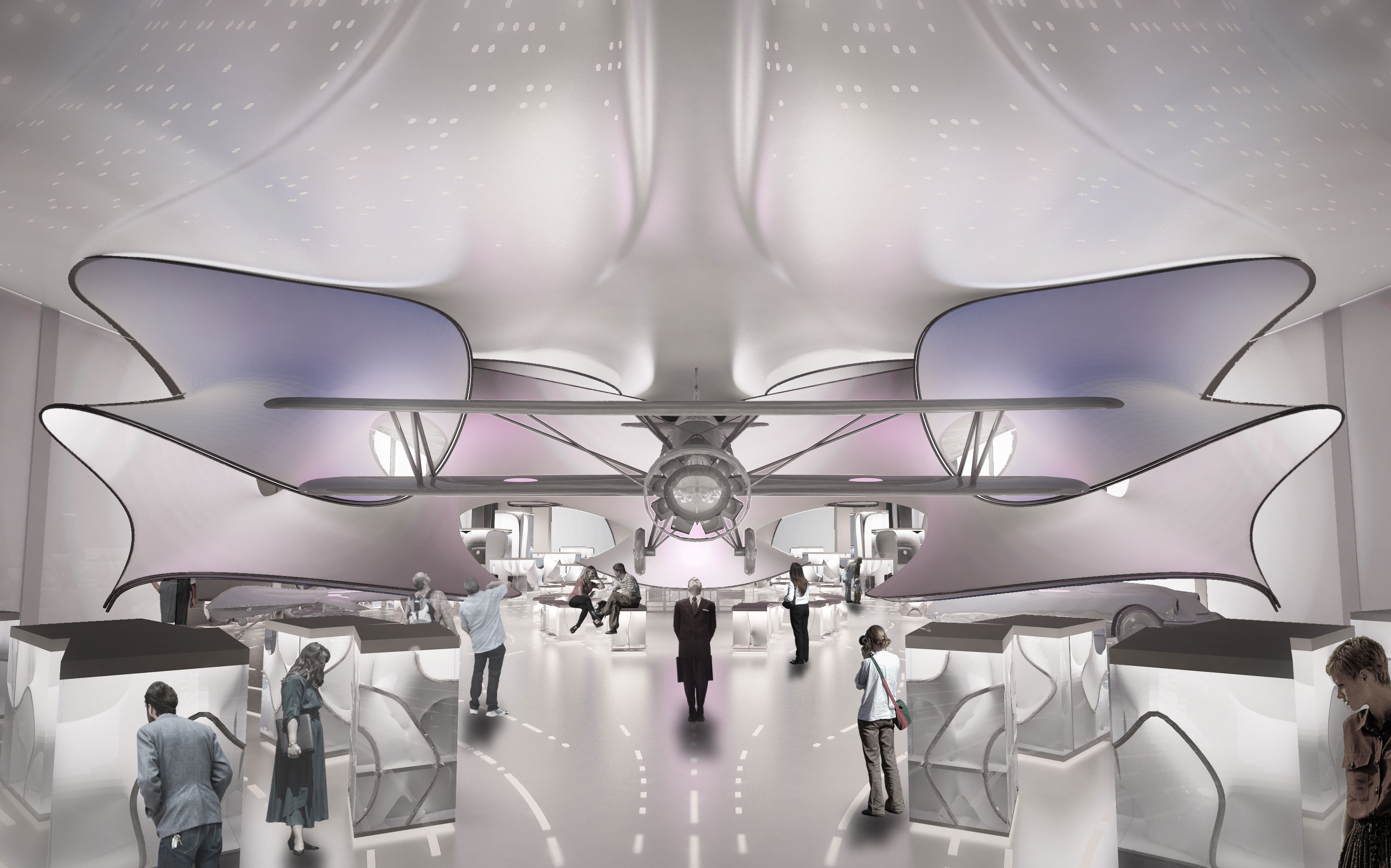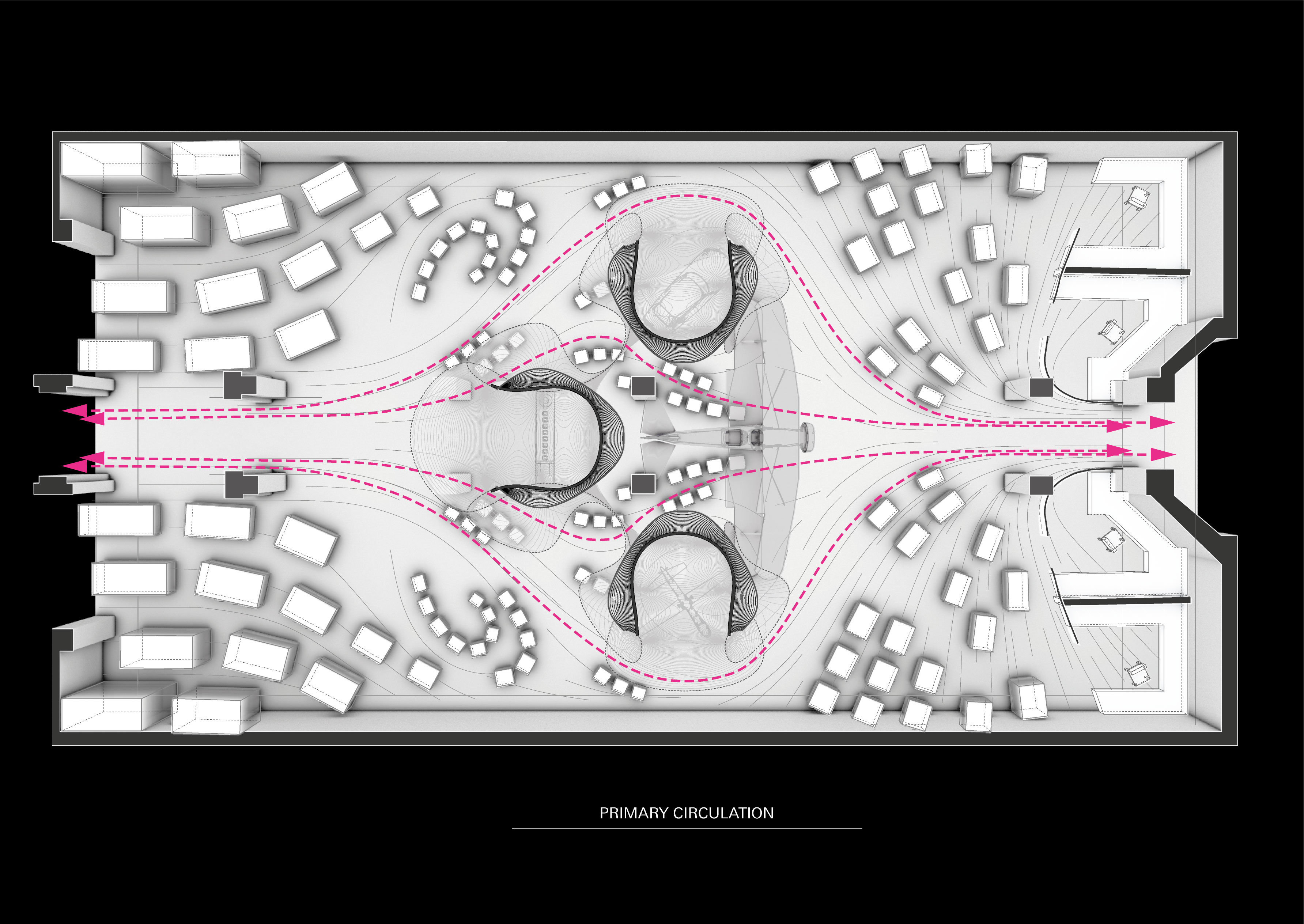Today, we announced an ambitious new mathematics gallery that will open in 2016.
Our new gallery will be designed by the world-renowned Zaha Hadid Architects, who also designed the stunning Aquatics Centre used in the 2012 Olympics in London, and has been made possible by the largest individual donation ever made to the museum, an unprecedented £5 million gift from David and Claudia Harding.
Dame Zaha Hadid, David and Claudia Harding, and Sajid Javid, the Secretary of State for Culture, Media, and Sport, joined our Director, Ian Blatchford, and the gallery’s curator, David Rooney, to announce the news this morning.

Ian Blatchford, the Science Museum’s Director, explained his ambition was ‘to deliver the world’s foremost gallery of mathematics both in its collection and its design.’ Dame Hadid described how mathematics, in particular, the modelling of turbulence around an aircraft, had inspired the design of the new gallery and she recalled her first visit to the Science Museum, aged 10, describing it as ‘extremely fascinating’.
Maths is too often perceived as a dry and complex, but the new gallery will tell stories that place mathematics at the heart of our lives, exploring how mathematicians, their tools, and ideas, have helped to shape the modern world.
The stories told in the gallery will span 400 years of science and mathematics, from the Renaissance to the present day, with objects ranging from intriguing hand-held mathematical instruments to a 1929 experimental aircraft.

The Handley Page aircraft is one of the star objects – a 1929 British experimental aircraft with a 12m wingspan, which will be suspended from the gallery ceiling. With civilian air travel expanding rapidly in the 1920s, aircraft manufacturers around the world needed a better understanding of the mathematics of aerodynamics and material stress.
This experimental aircraft, made in Britain by Handley Page and building on aerodynamic work carried out during WWI, was designed to take off and land slowly and steeply without stalling, vital at a time when urban airfields were often shrouded in fog.

Welcoming the £5 million donations, our Director Ian Blatchford described it as a “game-changing gift to the museum”. David Harding has a long-standing relationship with the Science Museum, most recently supporting the museum’s Collider exhibition and tour, the new Information Age gallery and our educational work.
The David and Claudia Harding Mathematics Gallery will open in 2016 and will be curated by David Rooney, who also curated our award-winning Codebreaker exhibition about the life of Alan Turing. The gallery is part of the Science Museum’s Masterplan, which will transform around a third of the museum over the next five years.
3 comments on “Bringing Maths To Life At The Science Museum”
Comments are closed.
The designs look fantastic!
As a regular visitor to the museum for fifty years, and as a primary teacher, it’s been great to see more and more engaging interactive galleries emerge. I really hope that the gallery, as well as being aesthetically wonderful, and telling some of the important stories of maths, will allow people to play mathematically.
This is obviously a challenge – it’s perhaps a lot easier to find interactive science exhibits than maths ones. But there are examples round the world, for instance MoMath.
A good starting point, given the beautiful surfaces in the proposed gallery, would be that visitors would be able to make their own minimal surface bubbles (perhaps with something like Zometool to make their own frames for the bubbles).
Thank you to all involved. I have just visited the Museum of Maths in New York and witnessed people of all ages, school parties and adults, getting really involved in experiencing the delight, drama and art of mathematics. Can’t wait to have a similar experience in London. Can I come to the opening ceremony? 😉
HI Jill, thanks for your comments. We can’t wait for the gallery to open either. Look out for more news about the gallery as we get closer to 2016.